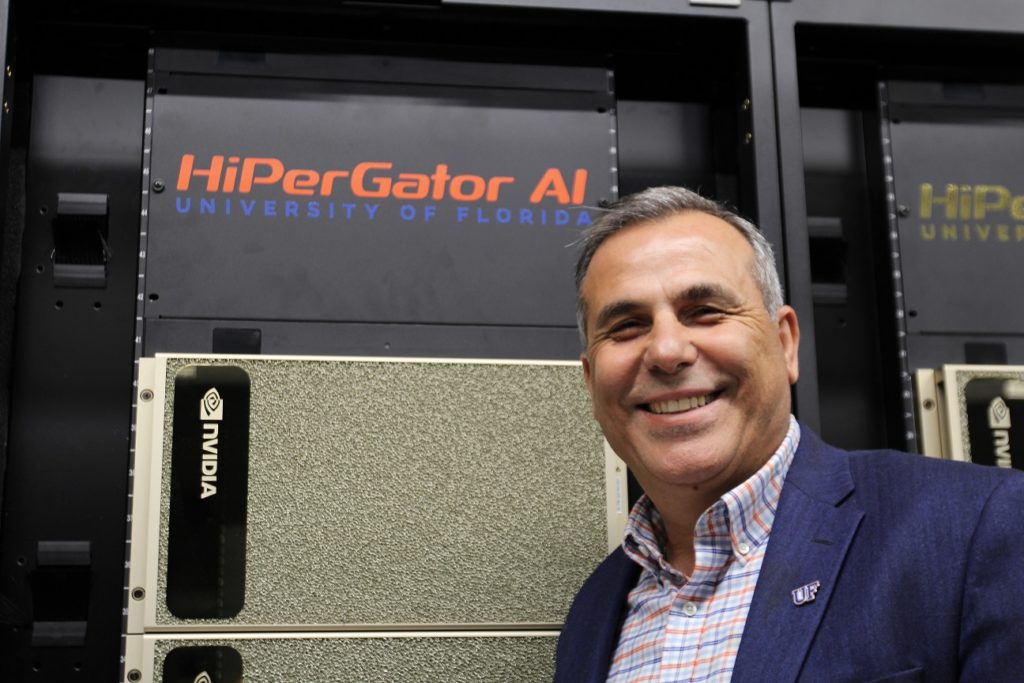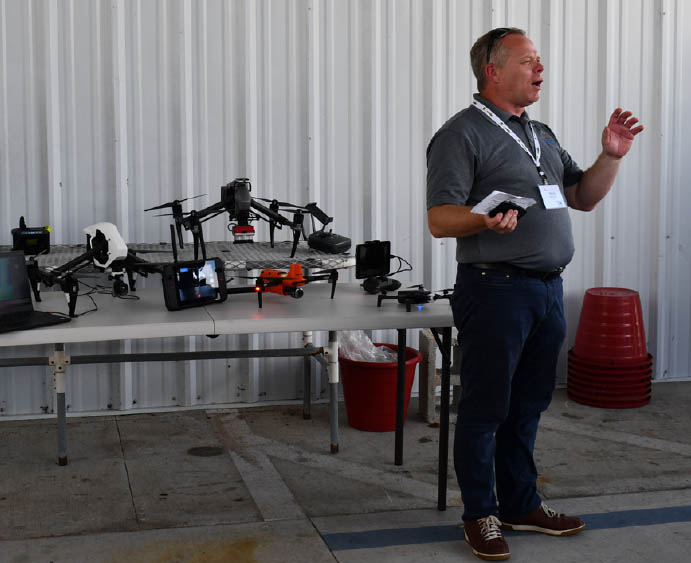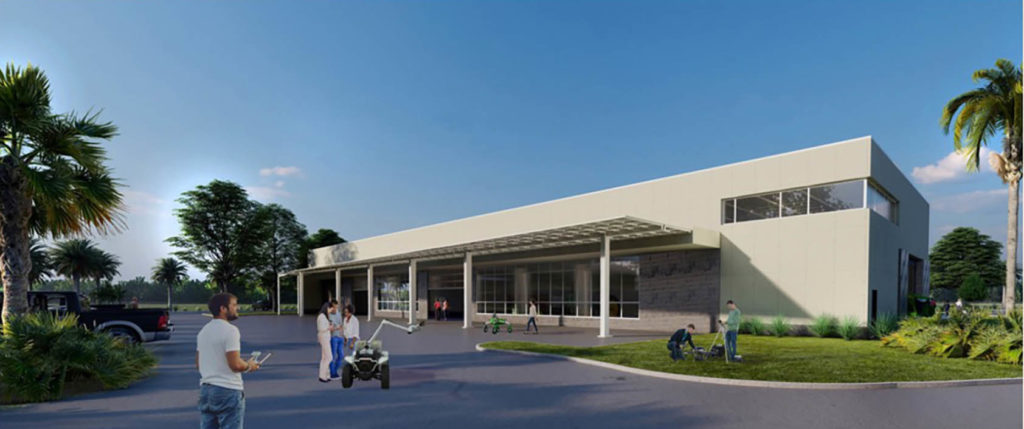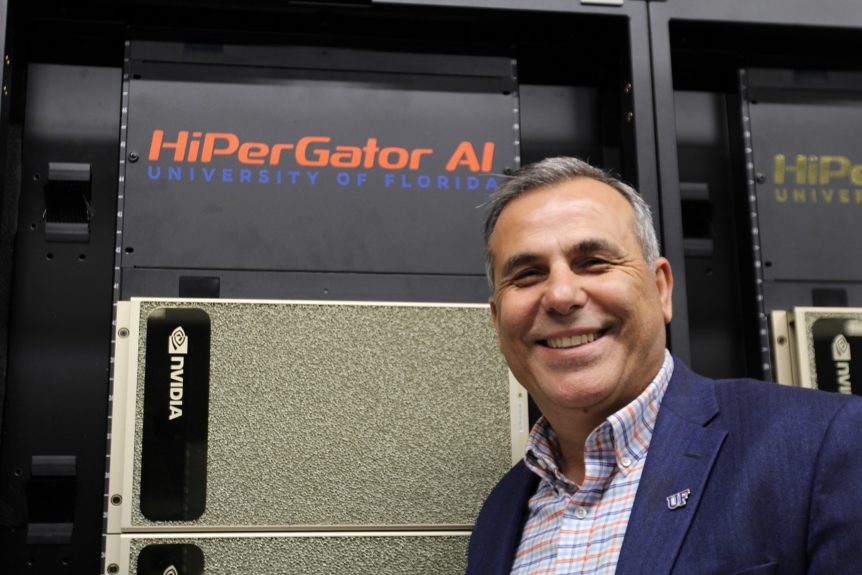By Frank Giles
In the past year, artificial intelligence (AI) has gained worldwide attention as breakthroughs like the large-language model ChatGPT wowed users with its capabilities and nearly humanlike feel when delivering results.
As the technology rapidly advances, it also has set off alarm bells for some who believe that computer technology might outpace human ability to control it in a safe and productive way. But others believe AI has the capability to make the world a better place, including in agriculture where a lot of research is already underway.
MIGHTY COMPUTING
Without supercomputers, AI would not hold much potential for change. Supercomputers are needed to crunch the massive amounts of data and calculations necessary to make the technology work.
The University of Florida (UF) is home to one of the mightiest supercomputers in the world. The HiPerGator, as the machine is called, is the most powerful supercomputer housed at a higher education institution in the United States. It is currently ranked as the 40th most powerful computer in the world across all categories.

Photos courtesy of the University of Florida
According to Elias Eldayrie, UF vice president of information technology and chief information officer, the HiPerGator already is providing big results within the university and holds promise for much more.
But what makes a supercomputer super? Eldayrie shares some examples.
“If you take the computer most of us use in our daily lives, those machines have four to six cores,” he says. “The HiPerGator has 70,320 cores. It can do more than a billion calculations per second.
“You could take every tax form produced in the United States and run it through the machine, and it would calculate those taxes in less than a second. It doesn’t mean you’d get a larger tax refund, but it would do it fast. But seriously, it is a very powerful machine.”
The HiPerGator is in its fourth generation. The computer was installed on the UF campus in Gainesville in 2013 and has been growing in capacity since that time. The latest generation of the system was enabled by a large donation from the technology company NVIDIA in 2020. This donation greatly enhanced the system’s computing power.
SUPER GOALS
According to Eldayrie, there are several specific goals UF has prioritized with supercomputing and AI. One of those is to expose every student at every level to AI across the school curriculum.
“We believe if you graduate from the university and don’t know about AI, you will be at a disadvantage. So, our goal is to have every student exposed to AI at some level,” he says. “Obviously, the intensity of that exposure will vary depending upon the discipline.”
Another area where AI is being deployed is assisting the start-up companies that are being incubated on the Gainesville campus. The UF Innovate program helps these companies move their ideas from the research and development phase into the commercial marketplace. Some of these are technology-based companies, including those in agriculture. They will benefit from sharing the HiPerGator’s computing powers.
Workforce development is another area where AI will benefit the teaching process. And finally, AI research assistance is where the technology is being utilized to analyze data and speed up the research process. Eldayrie says across the various disciplines and schools at the university, AI and the HiPerGator are heavily engaged.
AGRICULTURAL APPLICATIONS
UF’s Institute of Food and Agricultural Sciences (UF/IFAS) has been one of the larger users of the HiPerGator to assist on a wide array of research fronts.
“A lot of the UF/IFAS faculty are using the HiPerGator. One of my favorites is a project where they are using the computer to develop image recognition software to identify nematode species more quickly,” Eldayrie says. “They are analyzing 7,000 nematode samples per year and plan to use the software to speed up species recognition to enable faster diagnosis for our growers. This is important work. Nematodes cause more than $125 billion in crop damage worldwide each year.”

That research, being led by Peter DiGennaro and Alina Zare, is among the many projects being assisted by AI and supercomputing. Another is a project being led by UF/IFAS weed scientist Nathan Boyd, which aims to save on the cost of herbicide applications. It is a common tactic to train AI systems to differentiate weed species, but Boyd is taking a different approach.
“We’ve decided that’s not really necessary, because you use the same herbicide on many species. Instead, our system is currently trained to differentiate by category,” Boyd says. “A category would be broadleaf, grass and nutsedge. We use three different herbicides on those categories.”
AI can identify the weeds and apply pre-mixed herbicides to target those pests. It is all done automatically while driving through the field. Boyd targets the pre-emergent herbicide in the holes of plastic mulch. A post-emergent application is needed as well to control nutsedge emergence through the plastic. Applications in the row middles also can be made using the technology.
“It’s a real-time spray, so the camera is 18 inches ahead of the nozzle, just to give you an idea of how fast it has to compute. It’s detecting, identifying and telling it (the nozzle) to open and close as you’re driving, all at one time,” Boyd says.
INVESTING IN AI
Scott Angle, senior vice president of UF’s College of Agriculture and Life Sciences and leader of UF/IFAS, has made AI a cornerstone priority. He’s often said he’d like to make UF/IFAS the “Silicon Valley” of agtech. Eldayrie says the school has its advantages.

“We believe we have a competitive advantage compared to other places around the country, because not only of the resources we have available on the technology side, but also the intellectual capital and know-how of our faculty,” Eldayrie says. “We have hired 100 additional AI faculty in the past 14 to 15 months. Prior to that, we hired 500 faculty (net gain), many of which have AI expertise as well.”
To further boost that advantage, UF/IFAS has announced the development of a new Center for Applied Artificial Intelligence in Agriculture. The 19,000-square-foot facility will be constructed at the Gulf Coast Research and Education Center (GCREC) in Wimauma.
“The center will be our most important facilities investment in a generation,” Angle notes. “It will add momentum to a movement. It will be a declaration that Florida’s farmers are in the vanguard of feeding the world in a more sustainable way and the epicenter of accelerated evolution of agriculture from human-labor-intensive to technology driven.”
Jack Rechcigl, GCREC director, says the project should take about three years to complete, but work is well underway. The facility will house 150 people, along with up to 15 faculty.
“The economic impact will be widespread,” Rechcigl said. “The center will strengthen the agricultural industry but will also support current manufacturing industries and the formation of start-up entities focused on AI-based and robotic technologies.”










